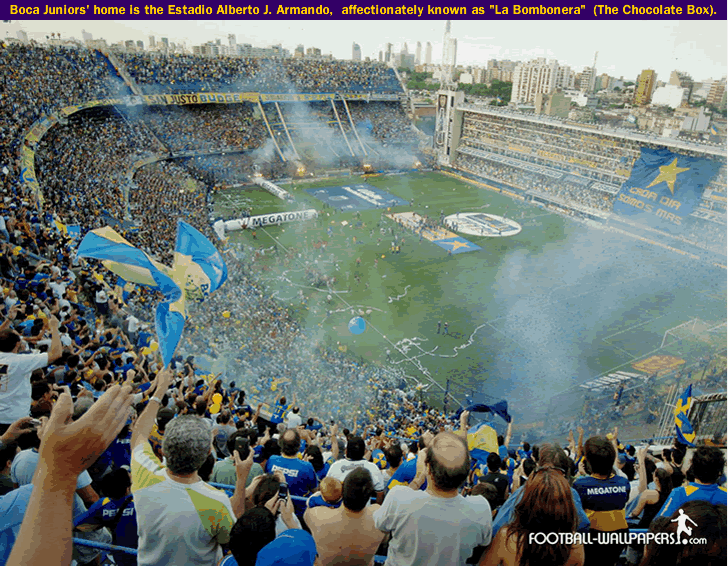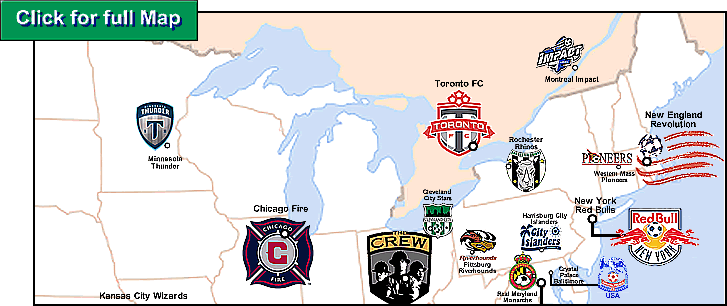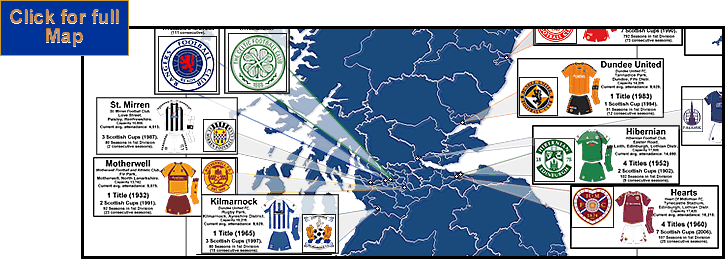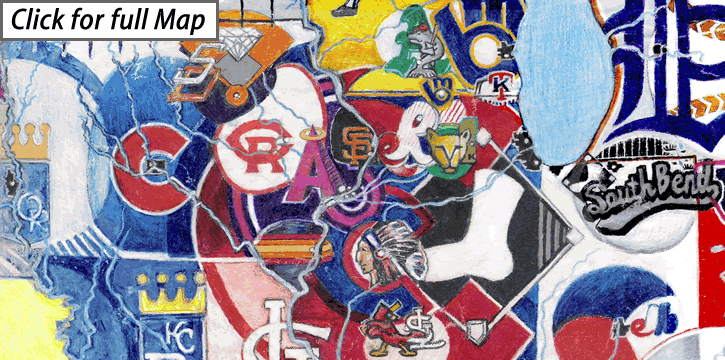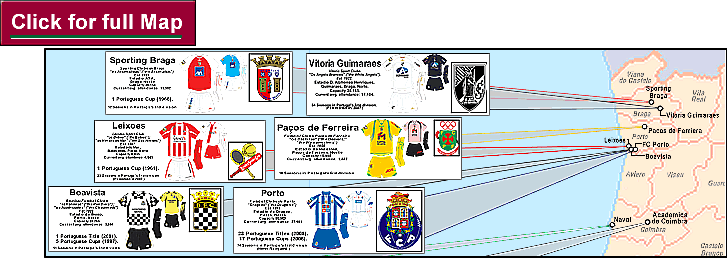
Watford Rovers were formed in 1881. In 1890, they merged with the West Hertfordshire Rangers. West Herts Rangers joined the Southern League, Second Division in 1896, and turned professional the next year. In 1898, West Hertfordshire Rangers merged with Watford St. Mary’s, to become Watford FC.
Watford FC won the Southern League, Second Division in 1900, and were promoted to the Southern League, First Division. Four years later (1904), Watford won that divison’s title (there was no promotion to the League, back then). The club won their second Southern League title in 1915.

Watford joined the English Football League in 1921, when the League expanded. The entire Southern League, First Division joined the League, en masse, as the Third Division, South. The following year (1922), Watford moved from their Cassio Road ground to Vicarage Road, where they have played ever since {see this entry, from Wikipedia}.
Watford would spend 31 seasons (1921-1958) in the third tier of English football. Their best finish would be in 4th place, which was achieved 3 straight seasons in the late 1930′s; and in 1954. They were almost relegated out of the League, in 1951, when they finished in 23rd place, but the club was successfully re-elected to the League (there was no Fourth Division then; it was created in 1958 {see this}).
Watford were relegated to the newly created Fourth Division in 1958, after a 16th place finish (12 of the 24 clubs in both the Third Division, South, and the Third Division, North were relegated to fill the new Fourth Division). The club bounced back to the Third Division two seasons later (1959-60), the same season they changed from blue and white, to yellow and black kits. At this time, their nickname of the Hornets came into currency.
Watford spent the next 9 seasons in the Third Division, and were finally promoted to the Second Division in 1969, when they finished in first. Their stay in the second tier would last just 3 seasons, though, and by 1975, the club was back in the 4th level. But this nondescript little club from the northern suburbs of London was about to go through its greatest period.
In 1976, international pop/rock star Elton John became involved with Watford FC, the club he had supported as a child. He became chairman of the club in ’77, and his hiring of Lincoln City manager Graham Taylor, along with his substantial cash investments, resulted in Watford’s successive promotions in 1978 (to the Third Division) and 1979 (to the Second Division). Once in the Second Division, the club consolidated with finishes of 18th, then 9th place. In the summer of 1981, Watford signed 17-year old Jamaican-born midfielder John Barnes {see this}. He swiftly established himself in the squad, and along with Watford-born midfielder Kenny Jackett {see this, from an independant Watford FC site} and mainstay winger Wilf Rostron {see this}, they provided an effective complement to striker Luther Blissett (also from Jamaica) {see this, from the FA website}. In the 1981-82 season, the squad began playing a more fluid brand of football that belied their reputation as a long-ball, “Route 1″ team, and Watford marched up the table.
In the spring of 1982, for the first time in the club’s history, Watford were promoted to the First Division. The club had finished in 2nd place in the Second Division, behind bitter local rivals Luton Town. And once in the first level, the squad did not let up. In September of 1983, in their seventh game in the top flight, Watford made their presence known in an emphatic manner: a 8-0 annihilation of Sunderland. {See this account of the eight-goal slaughter, from the Blind, Stupid and Desperate website}.
Amazingly, Watford finished their First Division debut season in second place, 11 points behind Liverpool, and 1 point ahead of 3rd place Manchester United. Luther Blissett led the league with 27 goals. Europe beckoned.
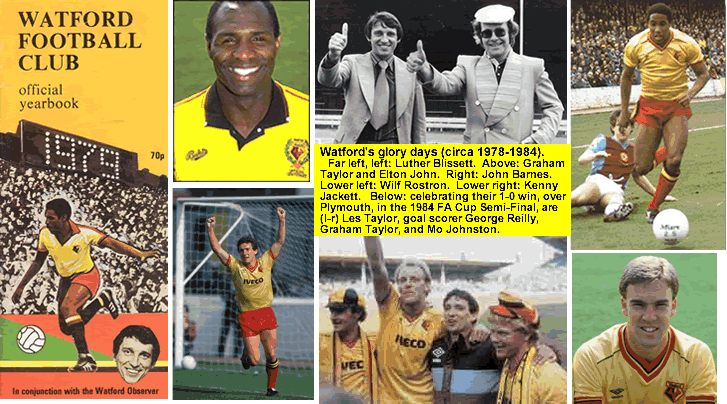
The following season, Watford finished in 11th place. But this was not a let-down, as the club had fine cup runs, in both domestic and European competitions. The club had sold Luther Blissett to AC Milan for 1 million pounds (he would return back to Watford the following season, after a disappointing showing in the Italian Serie A). This did not seem to affect their cup performances, though, even when more than half their starting squad was injured.
In the UEFA Cup competition, Watford first visited the German club Kaiserslautern, in September 1983, and promptly dug themselves a hole, as they went down 1-3. To be fair, the squad was injury-depleted, with 7 starters out. But in the second leg of the match, at Vicarage Road, Watford ran rampant, stunning Kaiserslautern 3-0, with a brace of goals by the diminutive Ian Richardson, in his first-team debut. Watford advanced on a 4-3 aggregate score. {To see some colorful accounts of both the Watford v. Kaiserslautern matches, from the B,S&D site, click on the following: {first leg- http://www.bsad.org/defeat/kaisersa.html}. {2nd Leg (Vicarage Road).}
**{Click here, for the video highlights of Watford 3-0 Kaiseslautern; 24-9-1984 (via youtube).}
The Hornets next UEFA Cup opponent was Levski Spartak Sofia. Watford only managed a draw in the 1st leg, at home, 1-1. The 2nd leg presented a huge challenge to the Watford traveling faithful: a 6-day, 3,000 mile journey into the Iron Curtain. Nevertheless, a busload made it to the Bulgarian capital. And they were rewarded with a surprising 1-3 Watford victory, in AET. In the 3rd Round, Watford were matched with Sparta Prague, and this is where they ran out of steam, going down 7-2, aggregate. But their ’83-’84 UEFA Cup run was still an unqualified successs. After all, Watford had never even been in the first division before 1982.
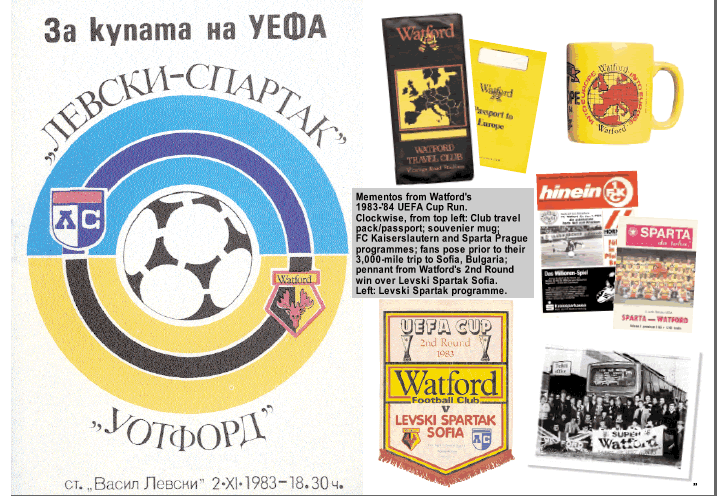
The club’s FA Cup run that season was also successful. After making it all the way to the Semi-Finals, they beat Plymouth Argyle 1-0, at Villa Park. This meant a trip to Wembley Stadium, for the 1984 FA Cup Final, versus Everton. Watford came up short, though, conceding a goal on each side of halftime, and falling to a strong Everton side that would go on to win the League the following season.
The Watford FC of the 1980s would go on to have a 6 season stay in the top flight, but they only finished once more in the top ten: 9th place, in 1987. In the summer of’ 87, Graham Taylor left to manage Aston Villa, and Watford was unable to fill his shoes. They were relegated the following May.
Since that time, Watford have spent 2 seasons in the 1st Level (on two different occasions: 1999-2000, and 2006-07); 16 seasons in the 2nd Level; and 2 seasons in the 3rd Level. Taylor had returned to Watford in 1996, as general manager, after Elton John had bought Watford FC for the second time. In the interim, Taylor had led Aston Villa back to the top flight in 1988, guiding Villa to 2nd place there, in ’90; then he had had a tumultuous three years as coach of the English National team {see this}.
After Watford were relegated to the 3rd Level, in 1996, he appointed himself manager, and was able to once again engineer back-to-back promotions for the club. For the second time, Graham Taylor had brought the small club from Herfordshire up to the top flight.
However, their second stay in the first division lasted just one season. This was also the case with Watford’s rather surprising promotion to the Premiereship in 2006. There were other parallels between these two Watford teams. Both Graham Taylor, and Watford’s current manager, Adrian Boothroyd {see this}, have utilized an uninspiring form of long-ball play that, while effective in creating scoring chances, is frankly not a joy to watch.
Longball tactics don’t translate well to the Premier League: Aidy Boothroyd’s squad looked overwhelmed in the top flight, and Watford were relegated in May 2007. However, the club started off the 2007’08 season in the League Championship very strongly, and looked like a solid bet to return to the top tier. The wheels started coming off around the Holidays, though, and lately, the club is stuck in the rut of drawing most of their games (recent form: 1 loss, preceded by 7 draws). They have hung around just below the automatic promotion places, though, and it would be foolish to count them out of the promotion race, even after they sold one of their main scoring threats, Marlon King, to Wigan. Their leading scorer is Darius Henderson {see this}, with 12 league goals. Watford are in 5th place in the League Championship, 5 points , and two places, above the playoff spots. They play struggling Coventry City at home on Saturday.
Aidy Boothroyd was able to get Watford promoted last season, with limited resources, and in the face of initial opposition from many Watford supporters (their thinking was that he was too young and inexperienced to lead a club in such a precarious position). This, when many experts were picking Watford to be relegated, not promoted. So Watford could still salvage their bright start, and come through in the playoffs.
[Note: this is the last of my series of 2nd Level English Promotion Candidates. I profiled 12 clubs, and the whole dozen of them still have viable chances of making it to the Premier League next season. The teams I profiled are sitting in 1st through 12th places. {Click here for the League Championship table.} Its pretty amazing that with about 85% of the season gone, half the league still has a chance at promotion. It is a reflection of how competitive the 2nd Level of English football is.
Thanks to (historicalkits[dot]co[dot]uk): the 5 older kits on the chart, and the 2 kits on the first illustrated gallery, are copyright Historical football Kits, and are reproduced by permission. Thanks to (colours-of-football[dot]com): for the newer kits on the chart. Thanks to: (journeymanpro[dot]co[dot]uk) for the 1983-’84 Watford UEFA Cup gallery illustration; to (watfordpremiumtv[dot]co[dot]uk); to (footballgroundsguide[dot]com); to (viewimages[dot]com); and especially to the Blind, Stupid, and Dumb site (bsad[dot]org), for their valiant effort to keep alive the glory days of Watford. Also, thanks to the Tim’s 92 site, which features excellent panaoramic views of English Football Stadiums. I just added it to my blogroll.


